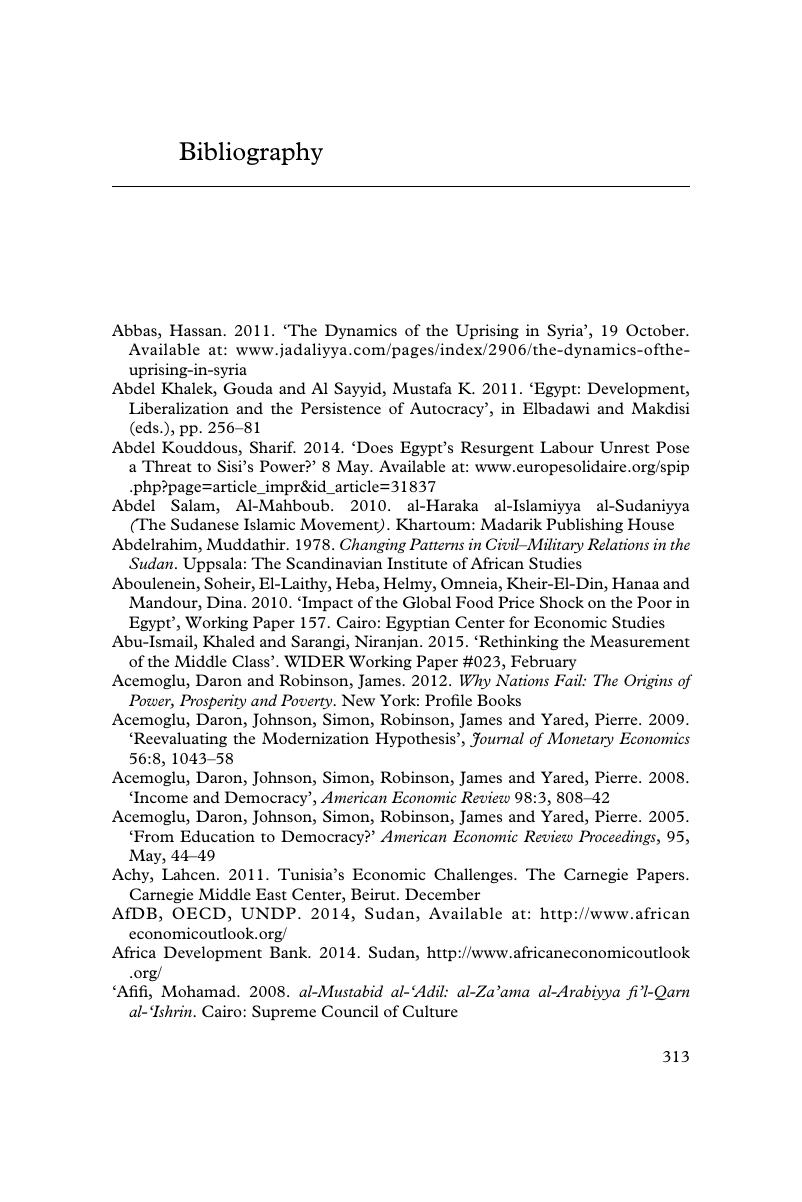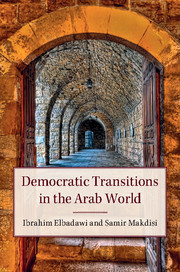Book contents
- Democratic Transitions in the Arab World
- Democratic Transitions in the Arab World
- Copyright page
- Dedication
- Contents
- Figures
- Tables
- Contributors
- Acknowledgements
- Introduction and Summary
- Part I Conceptual and Cross-Country Perspectives
- Part II Case Studies: Successful, Protracted and Painful Transitions
- Part III Concluding Observations
- Bibliography
- Index
- References
Bibliography
Published online by Cambridge University Press: 19 January 2017
- Democratic Transitions in the Arab World
- Democratic Transitions in the Arab World
- Copyright page
- Dedication
- Contents
- Figures
- Tables
- Contributors
- Acknowledgements
- Introduction and Summary
- Part I Conceptual and Cross-Country Perspectives
- Part II Case Studies: Successful, Protracted and Painful Transitions
- Part III Concluding Observations
- Bibliography
- Index
- References
Summary

- Type
- Chapter
- Information
- Democratic Transitions in the Arab World , pp. 313 - 333Publisher: Cambridge University PressPrint publication year: 2016



